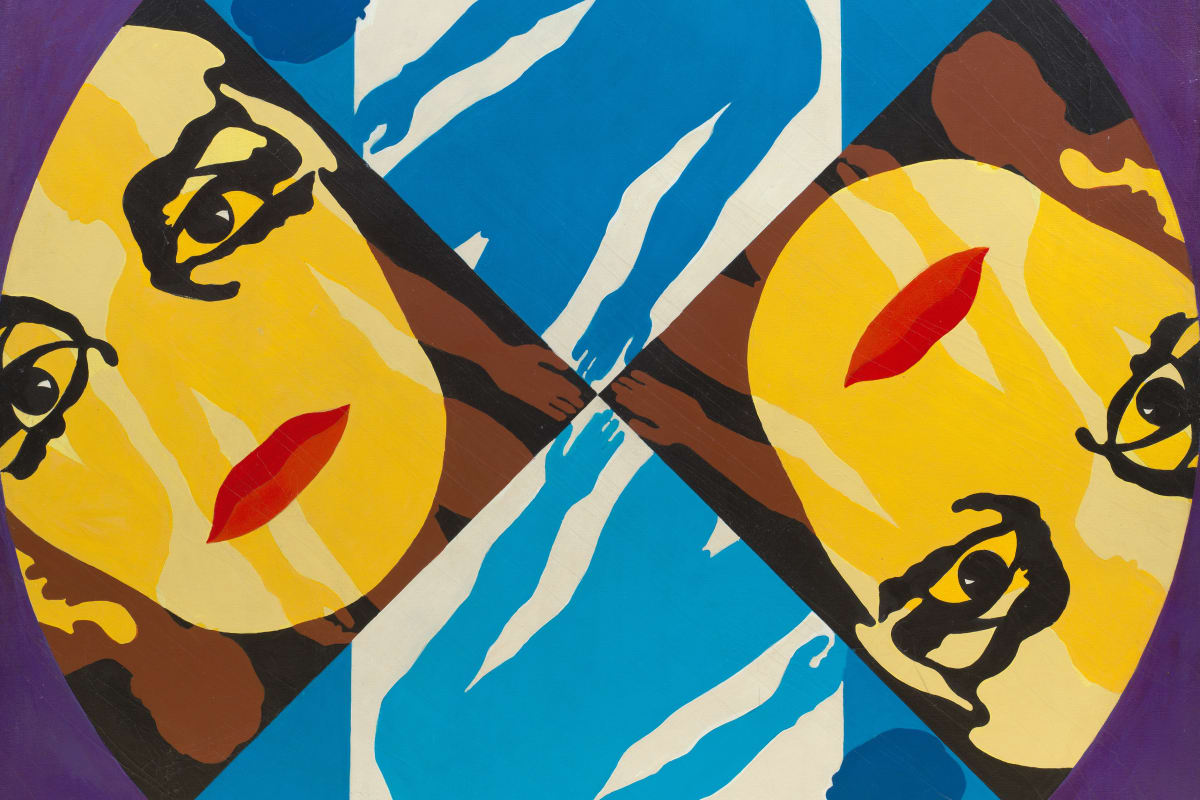Richard Hamilton British, 1922-2011
Richard Hamilton was one of the most influential artists of the twentieth century. In the 1950s after Studying at the Royal and Slade Schools of Fine Art and his time working as a draughtsman for the government, Hamilton helped to produce several important exhibitions including Growth and Form and Man, Machine & Motion for the ICA in London. Most notably he collaborated on This is Tomorrow at the Whitechapel Gallery in 1956, for which he produced his seminal image Just what is it that makes today’s homes so different, so appealing? (1956) A collage comprised of modernist iconography culled from American magazines, the central muscle man figure holds a paddle with the word ‘POP’ on it, thus giving birth to the ‘Pop Art’ movement and defining consumer society in Post-War Britain.
Hamilton drew directly upon the social changes of the time, reflecting on the rise of Americanised mass consumption or on the changing political landscape. Heavily inspired by Duchamp and his Readymades, his paintings and in particular his prints, consistently challenged and worked to eradicate the boundary between ‘high’ and ‘low’ art. For Hamilton, all art was of equal value whether it was a tabloid Paparazzi photograph of a handcuffed Mick Jagger or illustrations for James Joyce’s Ulysses.
His iconic series of portraits of the Guggenheim museum transformed the building into a Pop icon; a symbol which foreshadowed the now omnipresent corporate branding through logos.
Throughout his career Hamilton has exhibited internationally. Major retrospective exhibitions have been organised by the Tate Gallery, London, 1970 and 1992, Solomon R. Guggenheim Museum, New York, 1973, MACBA, Barcelona, and Museum Ludwig, Cologne, 2003. He was Britain’s representative at the 1993 Venice Biennale and Hamilton’s work is held by almost every major museum in the world.



